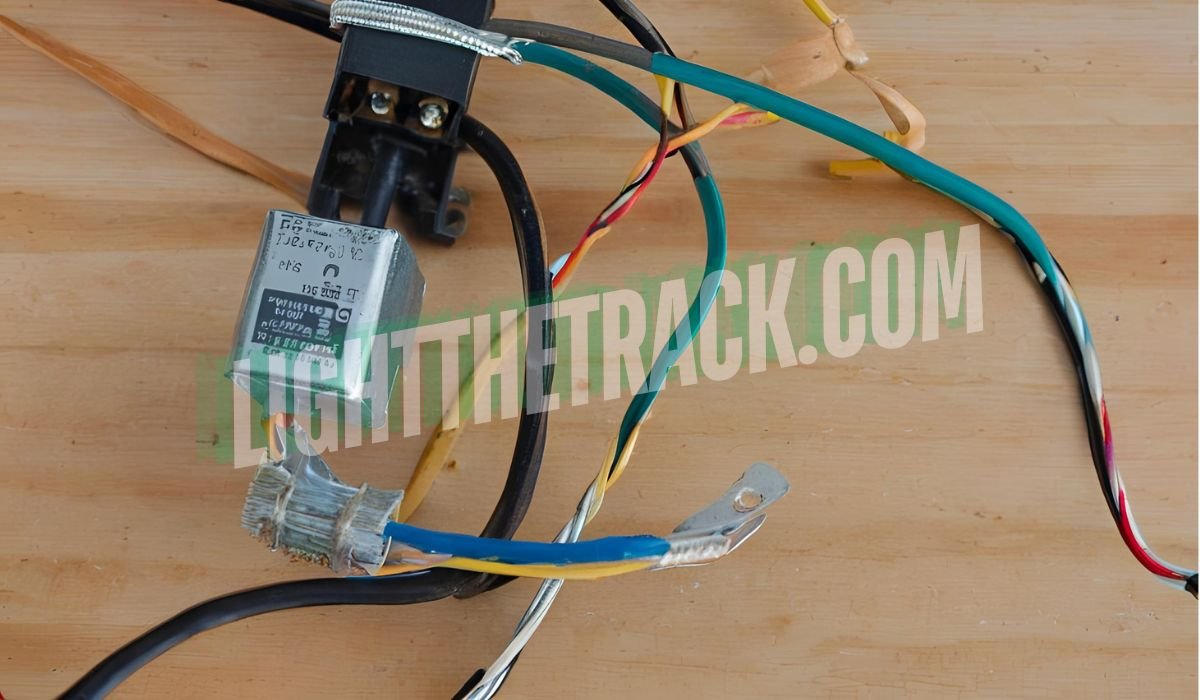To wire a headlight relay, start by connecting the power source to the relay’s terminal. Then, connect the relay to the headlight.
Wiring a headlight relay can improve the efficiency and performance of your vehicle’s lighting system. This simple modification can provide brighter headlights and reduce the load on the headlight switch. Additionally, it can prevent voltage drop and dim headlights, especially in older vehicles.
By understanding how to wire a headlight relay, you can enhance the safety and visibility of your vehicle while driving at night. It’s a relatively straightforward process that can yield significant benefits in terms of headlight performance.

Credit: m.youtube.com
The Illuminating Benefits of Headlight Relays
Upgrading to headlight relays offers significant benefits, enhancing brightness and providing more reliable lighting. Compared to direct wiring, relays ensure a more stable electrical connection, resulting in brighter headlights. The use of relays also reduces the load on the headlight switch, preventing issues such as dimming or flickering lights. Moreover, upgrading to relays can prolong the lifespan of the headlight bulbs and the entire lighting system, ultimately saving on maintenance costs. With these advantages, it’s clear that headlight relays are a valuable addition to any vehicle.

Credit: ibmwr.org
Headlight Relays Demystified
1. What is a Headlight Relay?
A headlight relay is a device used to control the flow of electricity to the headlights. It acts as a switch, allowing a low current to control a high current, which helps protect the headlight switch from damage.
2. The Role of Relays in Headlight Functionality
Relays play a crucial role in ensuring that the headlights receive a consistent and stable power supply. By using relays, the headlights can receive full power directly from the battery, resulting in brighter and more reliable lighting.
Designing Your Relay Wiring Plan
To design your relay wiring plan for headlights, start by identifying the power source, selecting the appropriate gauge wire, and choosing a suitable relay. Map out the circuit, ensuring proper grounding and connections, and consider using a wiring harness for a cleaner installation. Finally, test the system to ensure proper functionality and safety.
Choosing the Right Relay for Your Headlights
When wiring a headlight relay, it is important to have a clear plan in place. Start by making a checklist of the tools and materials you will need, such as wire, connectors, and a relay. Ensure that your wires are slightly longer than you think you will need, as you can always trim them down later if necessary.
Once you have your materials ready, carefully consider the type of relay that is suitable for your headlights. The purpose of a relay is to allow a small current to control a larger current, so it is crucial to choose a relay that can handle the current required by your headlights. Refer to the manufacturer’s specifications and guidelines to ensure compatibility.
Laying the Groundwork
Before you start wiring a headlight relay, it is important to understand your vehicle’s headlight circuit and take necessary safety precautions.
Safety Precautions
- Disconnect the Battery: Always disconnect the battery to prevent accidents or short circuits.
- Work Neatly: Ensure that all wires are longer than you think you will need, as you can always trim them down later if necessary.
The Relay Installation Process
Wiring a headlight relay is a crucial process to ensure that your headlights work efficiently. The relay installation process involves two main steps: mounting the relay and wiring it.
Steps for Installation
- Mounting the Relay: Choose a location that is easily accessible and doesn’t interfere with other components.
- Wiring the Relay: Follow a step-by-step guide to wire the relay, making sure all wires are neatly organized.
Power and Grounding Essentials
To wire a headlight relay, it’s essential to understand power and grounding basics. Start by connecting the relay trigger circuit to the headlight switch and then ground the relay to the chassis for proper functioning.
Important Considerations
- Wire Gauges and Fuses: Selecting the right wire gauges and fuses ensures proper electrical flow and prevents damage to the system.
- Proper Grounding: Crucial for optimal performance. Leave extra wire length to avoid any potential issues.
Testing and Troubleshooting
When testing and troubleshooting your new headlight relay setup, conducting a functional test is essential. Ensure all wiring connections are secure and properly connected.
Common Issues and Solutions
| Issue | Possible Cause | Solution |
|---|---|---|
| Flickering Lights | Poor grounding or loose connections | Double-check connections, ensure proper grounding |
| Dim Lights | Voltage drop or relay malfunction | Check relay and connections, replace if necessary |
| One Headlight Not Working | Faulty relay or wiring issue | Inspect and replace relay, check wiring |
Maintenance and Longevity
To maintain the longevity of your headlight relays, regular inspection and testing are crucial.
Key Maintenance Tips
- Regular Inspection: Look for signs of wear or damage, such as loose connections or burnt-out components.
- Upgrading Relays: Consider upgrading to higher-quality relays for better performance and durability.
- Installing a Relay Harness: Improves efficiency and reduces strain on your electrical system.
Frequently Asked Questions
How to Add Relays to Headlights?
- Determine the appropriate relay for your vehicle.
- Disconnect the battery and remove the headlight switch.
- Connect the relay to the battery and headlight switch using appropriate wiring.
- Connect the relay to the headlights.
- Test the headlights to ensure they are working properly.
Does Each Headlight Have Its Own Relay?
Yes, in a typical headlight circuit, each headlight has its own relay. The relays control the high beams, low beams, and sometimes the daytime running lights.
Why Are There 3 Wires on a Headlight?
The three wires on a headlight are for the low beam, high beam, and ground connections. Each wire serves a specific function in controlling the headlight’s operation.
What is the Function of the Headlight Relay?
The headlight relay allows a small current to control a larger current for the headlights, helping to manage the higher current needed for the headlights.
Conclusion
Wiring a headlight relay is a simple and effective way to improve the performance and longevity of your headlights. By allowing a small current to control a larger current, relays ensure that the headlights receive the power they need without straining the dashboard switch.
This not only enhances the brightness and visibility of your headlights but also reduces the risk of electrical issues. With the right tools and following the proper steps, you can easily wire a headlight relay and enjoy safer and more efficient lighting on your vehicle.


Leave a Reply